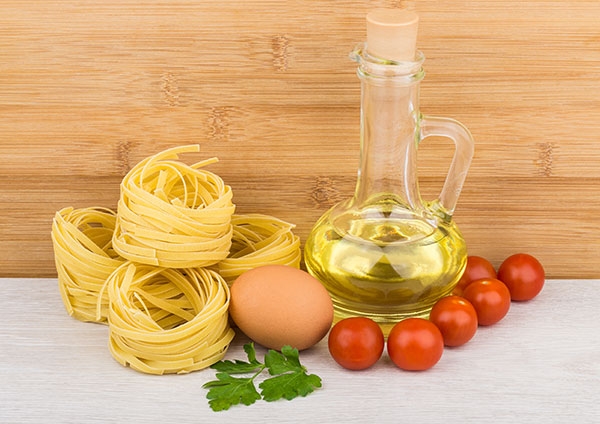Comparing Egg and Soy Lecithin

Lecithin has been used as an ingredient in foods and health food supplements for over a hundred years. Lecithin is derived from many different sources, performs many different functions, and varies greatly in its nutritional values. Lecithin was originally derived primarily from the oils in egg yolks, and interestingly, the word “lecithin” itself is derived from the word “egg yolk.”1 In 1845 Theodore Goebly managed to isolate the orange, emulsifying substance from yolks and gave it the name “lecithin,” after the Greek word “lekythos,” meaning, “egg yolk.” At that time the substance was far too expensive to produce in any substantial quantity, thus limiting any real industrial application. The appetite for economical lecithin remained high, however. In the 1920’s, the increased use of soy oil was leading to an abundance of waste meal and sludge created during the degumming process. German manufacturers later took the sludge, dried it under vacuum, and renamed the substance “Soy Lecithin.”2
Extremely economical and abundant, this “lecithin” byproduct of soy bean processing is the primary source of lecithin today.3 However, it is the lecithin of choice from an economical perspective, not from a nutritional or functional perspective. Egg yolk lecithin has many of the functional qualities of soy lecithin, yet is far superior nutritionally for the human body. Previously too expensive to manufacture, Ecovatec has unlocked the egg yolk, allowing for a better and more economically feasible egg lecithin.
While soy lecithin does contain many of the same properties of egg yolk lecithin, its chemical profile and makeup are vastly different. It is generally agreed that the PL that is of the most benefit for humans is phosphatidylcholine (PC). PC is used by the body to make and repair cell membranes. It is also used to make the neurotransmitter acetylcholine, which is used by the brain to control movement and is vital for maintaining memory. PC has been shown to help stave off dementia, prevent liver failure, and help brain development.4 Soy lecithin contains roughly 33% PC. Egg yolk lecithin, on the other hand, is made up of 66-76% PC (see Table 1: below). Using soy lecithin to improve your health is like bringing a Chihuahua to a Greyhound race. They both may be dogs, but one is going to outperform the other, hands-down.

Table 1 Class composition (mole,%) of phospholipids in crude soy and egg lecithin
| PC | PE | PS | PI | PA | LPC | LPE | SPM | |
|---|---|---|---|---|---|---|---|---|
| Soy Lecithin | 33 | 14.1 | 0.4 | 16.8 | 6.4 | 0.9 | 0.2 | n/a |
| Egg Lecithin | 66-76 | 15-24 | 1 | n/a | n/a | 3-6 | 3-6 | 3-6 |
PC: phosphatidylcholine; PE: phosphatidylethanolamine; PS: phosphatidylserine; PI: phosphatidylinositol; PA: phosphatidic acid; LPC: lyso-phosphatidylcholine; LPE: lyso-phosohatidylethanolamine; SPM: sphingomyelin.5
In addition to its nutritional value and health benefits, lecithin also serves as a shelf life extender and emulsifier.6 Eggs have long been used for their emulsifying properties in products like mayonnaise, helping to blend water and oil. PLs are amphipathic in nature,7 meaning that their heads are water loving and their tails are oil loving. This allows them to successfully mix two immiscible liquids. Egg yolk lecithin possesses this same property. Studies have shown that egg yolk lecithin can be as effective as an emulsifier as soy and, in some environments, even more stable. Egg yolk has also been shown to stave off rancidity better than soy lecithin. The negatively charged nature of the PLs present in soy lecithin, causes the emulsion to oxidize quicker than the neutral PLs in egg yolk lecithin.8
Another valuable component of lecithin is the phospholipid lyso-phosphatidylethanolamine (LPE). LPE has been approved by the Environmental Protection Agency to be used to extend shelf-life and ripen fruit.9 When applied to fruits such as apples, grapes, cranberries, strawberries, and tomatoes, LPE will help to promote the ripening process, thereby decreasing growth time for producers. The application of LPE can also be used on picked fruit and cut flowers to help slow the breakdown of membranes and greatly increase shelf life.10 Once again, egg yolk lecithin greatly outmatches soy, with 15 to 30 times as much LPE as soy lecithin.11
Soy lecithin is also problematic because of the soybean itself. The vast majority of soy used to produce lecithin is genetically modified.12 The long term effects of genetically modified foods is still unknown, and just the presence of GMO ingredients is enough to turn off many consumers. With the science pointing to possible links to infertility, increased allergies, and digestive problems, many people choose to stick with safer, non-GMO products like egg yolk lecithin. Unfermented soy products are also troublesome. Most lecithin is produced from unfermented soy because it is a cheaper and easier process. However, unfermented soy contains great amounts of enzyme inhibitors, making the complete digestion of carbohydrates and proteins impossible, which has also been linked to many digestive and reproductive problems. It is now believed that fermented soy products are the only soy products fit for consumption.13
1. http://www.soyinfocenter.com/HSS/lecithin1.php
2. http://thelecithincompany.co.uk/history.php
4. http://www.life-enhancement.com/magazine/article/1575-the-power-of-iessentiali-phospholipids
5. Guang Wang, “Functionality of Egg Yolk Lecithin and Protein and Functionality Enhancement of Protein by Controlled Enzymatic Hydrolysis,” (Masters Thesis, Iowa State University), 30.
7. http://www.life-enhancement.com/magazine/article/1575-the-power-of-iessentiali-phospholipids
8. Wang, 30.
11.Wang, 30.
12. http://chriskresser.com/harmful-or-harmless-soy-lecithin/


 A Canadian Company
A Canadian Company